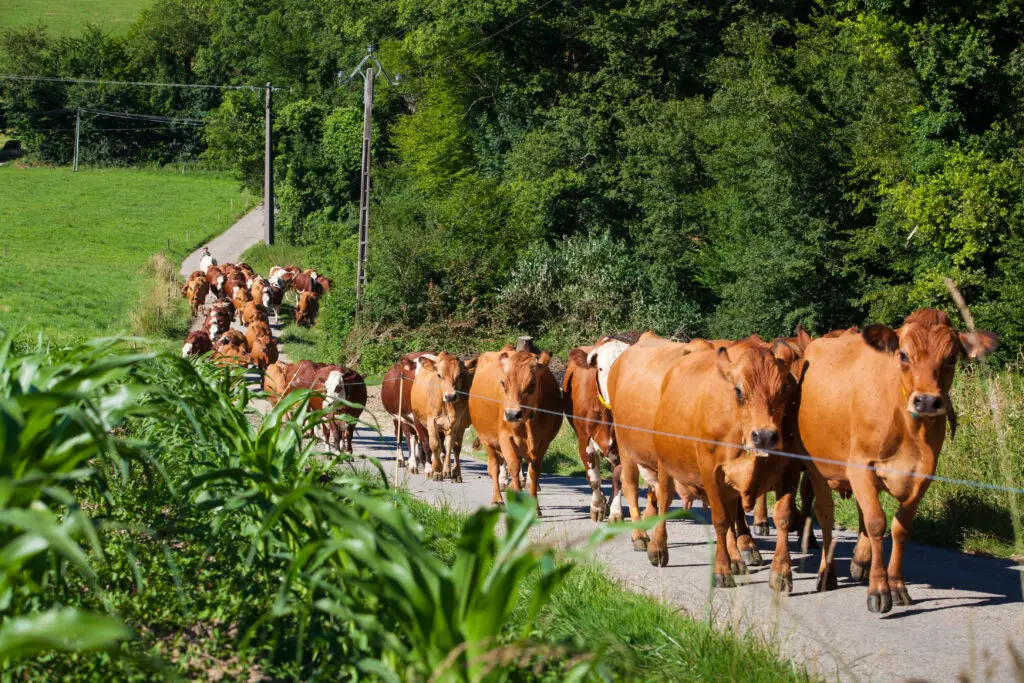In recent weeks, federal authorities have sounded the alarm over an outbreak of bird flu affecting dairy farms across the country. While initial reports suggested that the outbreak posed little risk to the nation’s food or milk supply, recent developments have underscored the severity of the situation.
The outbreak, caused by the highly pathogenic avian influenza (HPAI) virus, has raised concerns not only about the health of dairy cows but also about the potential transmission of the virus to other livestock and poultry. The U.S. Department of Agriculture (USDA) Animal and Plant Health Inspection Service (APHIS) has been closely monitoring the situation and providing updates on the spread of the virus.
One of the alarming developments in the outbreak is the detection of the virus among dairy cows, a species not typically associated with avian influenza. This unexpected transmission has raised questions about the extent of the outbreak and its potential impact on food safety.
To better understand the spread of the virus, APHIS has shared genetic sequences of the H5N1 avian flu virus from poultry, wild birds, and dairy cows. These sequences will aid scientists in tracing the origins of the virus and developing strategies to contain its spread.

In addition to detecting the virus in dairy herds, officials in North Carolina have reported bird flu infections in a cattle herd with no apparent symptoms. This finding suggests that the outbreak may be more widespread than initially believed, posing challenges for containment efforts.
Highly Pathogenic Avian Influenza (HPAI) is known for its high contagiousness and lethality in poultry, making it a significant threat to the poultry industry. While bird flu viruses typically do not infect humans, sporadic human infections have occurred in the past. Therefore, it is crucial to contain the outbreak and prevent further transmission to protect both animal and human health.
Amidst concerns about the safety of the milk supply, federal authorities have reassured the public that commercial milk remains safe for consumption. The pasteurization process, which involves heating milk to specific temperatures to eliminate harmful bacteria and viruses, has been effective in ensuring the safety of dairy products.
Nearly all commercial milk in the U.S. is produced on dairy farms that adhere to the Grade “A” milk program and follow strict safety regulations outlined in the Pasteurized Milk Ordinance (PMO). These regulations include measures to prevent the sale of milk from sick cows and ensure the pasteurization of all milk intended for commercial use.
Despite the assurances of federal authorities, ongoing research is being conducted to evaluate the effectiveness of pasteurization in inactivating the H5N1 virus in bovine milk. Laboratory studies are underway to assess the viability of the virus in milk samples collected from affected herds and to determine the best strategies for ensuring milk safety.
In the meantime, consumers are advised to continue following standard food safety practices, including pasteurizing milk before consumption and avoiding raw milk products. Producers are urged to take precautions to prevent further spread of the virus, including heat-treating discarded milk from affected cows and practicing strict biosecurity measures on farms.
While the bird flu outbreak among dairy cows presents challenges for the agricultural industry and public health authorities, ongoing efforts to contain the virus and ensure the safety of the milk supply remain a top priority. By working together and remaining vigilant, we can mitigate the impact of the outbreak and protect the health and well-being of both animals and consumers.